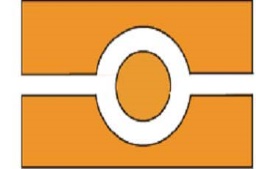Before beginning the ESTA application, nationals from Visa Waiver Program (VWP) countries who are considering travel to America need to ensure that they meet passport requirements for U.S.A. travel. As of April 1, 2016, all travelers wishing to use VWP privileges are required to have an e-Passport issued by their home country’s passport authority. The e-Passport must meet international standards for the security and storage of information pertaining to both passport and bearer. VWP travelers who do not have an e-Passport are required to obtain a nonimmigrant visa in order to travel to the United States.
What is an Electronic Passport?
Two major features distinguish e-Passports from other types of passports: a machine-readable zone consisting of two lines of letters, numbers, and chevrons (<<<) at the bottom of the data page; and an embedded RFID chip similar to those used in credit and debit cards. The chip stores a copy of the information printed on the passport’s data page, and a digital copy of the passport photo. The digital image is a biometric identifier used in conjunction with face recognition technology to verify the identity of the passport holder. All passports issued by VWP signatory countries must also have a digital photograph printed on the data page. Holders of older passports that have laminated or glued photographs must have a visa for travel to the United States.
In addition to data storage capabilities, the chip in e-Passports issued by the United States and VWP countries has a unique identification number, a digital signature that protects the stored data from alteration, and security features that prevent unauthorized reading of the stored data. The chip works with contactless technology that allows a reader to capture the stored data when the e-Passport is held close by. The process is quite similar to a bar-code scanner at the supermarket.
Electronic passports offer travelers convenience by supporting automated identity verification that reduces the time needed to clear immigration inspection procedures. By offering positive identification that is highly resistant to tampering or counterfeiting, e-Passports also facilitate better border protection and security. The production and adoption of e-Passports and e-Passport readers is the outcome of cooperation between the United States and the VWP countries. Extensive testing and development work in the U.S. and partner countries has resulted in a technology solution that is an important component of a comprehensive international effort to increase security and support legitimate travel and trade.
An e-Passport can be identified by the RFID chip logo on the front cover.

Most citizens of VWP countries who have passports issued after 2007 will already have e-Passports. However, VWP travelers who have questions about their passport, the VWP, or the ESTA process are advised to contact a specialist service such as Application ESTA. These professionals have extensive experience with VWP and ESTA regulations and the problems commonly faced by people preparing for travel to the U.S. Unlike a government agency, a service of this type is customer service-oriented and capable of responding quickly to any questions travellers have. With a little help, it will be a simple matter to clear up any passport confusion and get the ESTA application underway.

